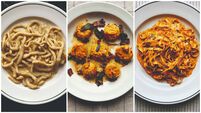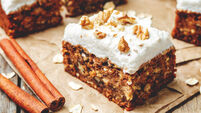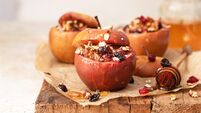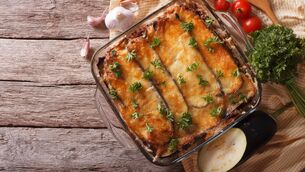The Currabinny cooks: Three recipes for apples
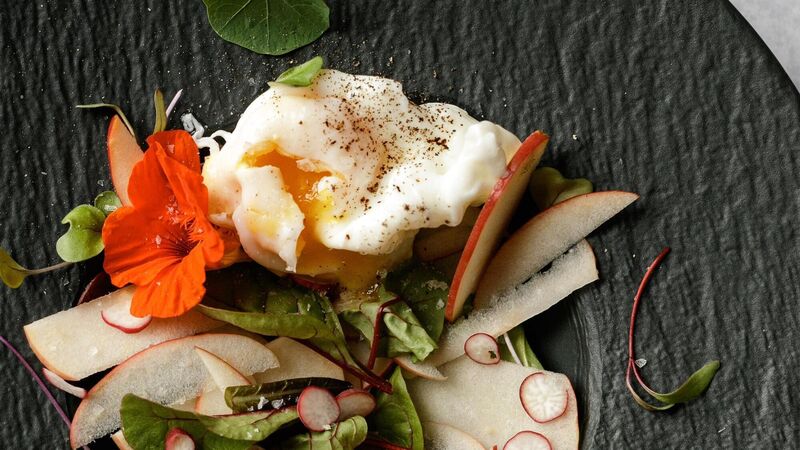
Breakfast Salad. Photos: Bríd O'Donovan.
Apples have been grown on this island for at least three thousand years.
Astonishingly, contrary to our long history of growing this particular fruit tree, 95% of our eating apples are being imported from places as far away as New Zealand, India, South America and China. There is much to be alarmed by this.
Apples are so entwined in our cultural landscape, with ancient orchards in their thousands, a huge array of indigenous varieties and holding huge significance in Irish mythology where they represent immortality. Supermarkets increasingly value certain varieties for purely aesthetic reasons, buying in unblemished but often tasteless fruit from far flung places.

The more you explore our own rare varietals of apple, you may come to the conclusion that the uglier the apple, the tastier it might be!
It is never too late to plant an apple tree. Reclaiming apples in our own gardens could do some work in combating the huge loss of our own history and connection to Irish indigenous apples. I would strongly urge everyone to go and visit the Irish Seed Savers association down in Scarriff, Co. Clare.
Their main objective is to conserve and preserve Ireland’s threatened heirloom and heritage varieties that are uniquely suited to our climate and growing conditions. They have created a ‘Native Apple Collection’ containing over 170 distinct varieties, many which had previously been thought lost forever. You can sign up to be a member to help conserve our food heritage and also gain access to a huge array of heritage seeds, apple trees and workshops on a range of topics.
The Irish Seed Savers work on apples is forever growing. If you have an old apple tree somewhere on your land you can let the Irish Seed Savers know and so help them catalogue all the varieties and help ensure the long term survival of Ireland's heritage species.
The names of some of these ancient apples are enough to illicit excitement. When you hear that somewhere there grows apples called ‘honey ball’, ‘Minogue White Mossy’, ‘windows friend’ or ‘Cavan sugarcane’ how could you not do whatever it takes to help preserve them and hopefully get to taste them. You never know, you may have a rare Irish apple waiting to be rediscovered in the back garden or some old field. When an old variety goes extinct they are gone forever, so invest in buying, eating and growing our own beautiful Irish apples.
Sometimes I wake up to meet the new day craving something other than the usual porridge or boiled eggs. On these days I pine for something a little more elegant, refined and beautiful. The need for a more elevated breakfast might have something to do with this time of year, with chilly mornings and evenings to contend with and that back to school feeling. This breakfast salad is perfect because it looks fussy but is in fact simple. It also looks gorgeous on the plate and tastes fresh and bright, for when such pleasures are needed first thing.
- 1 Irish apple, cored and cut into thin slivers
- 4-6 small breakfast radishes, sliced thinly
- Mixed garden leaves ( rocket, nasturtiums, mizuna etc.)
- 120ml extra virgin olive oil
- 3 tablespoons of apple cider vinegar
- Juice of 1/2 lemon
- Sea salt and black pepper
- 2 organic eggs
Make the dressing by whisking together the oil, vinegar and lemon juice, seasoning generously with sea salt and freshly cracked black pepper.
Place the leaves (washed), apple slices and radish slices in a bowl and drizzle over some of the dressing. You want it generously dressed but not soggy or drenched.
Poach the eggs in boiling salted water, drain and gently place on top of the salad. Season the eggs with black pepper and a little salt. I like to garnish with some peppery edible nasturtium flowers.
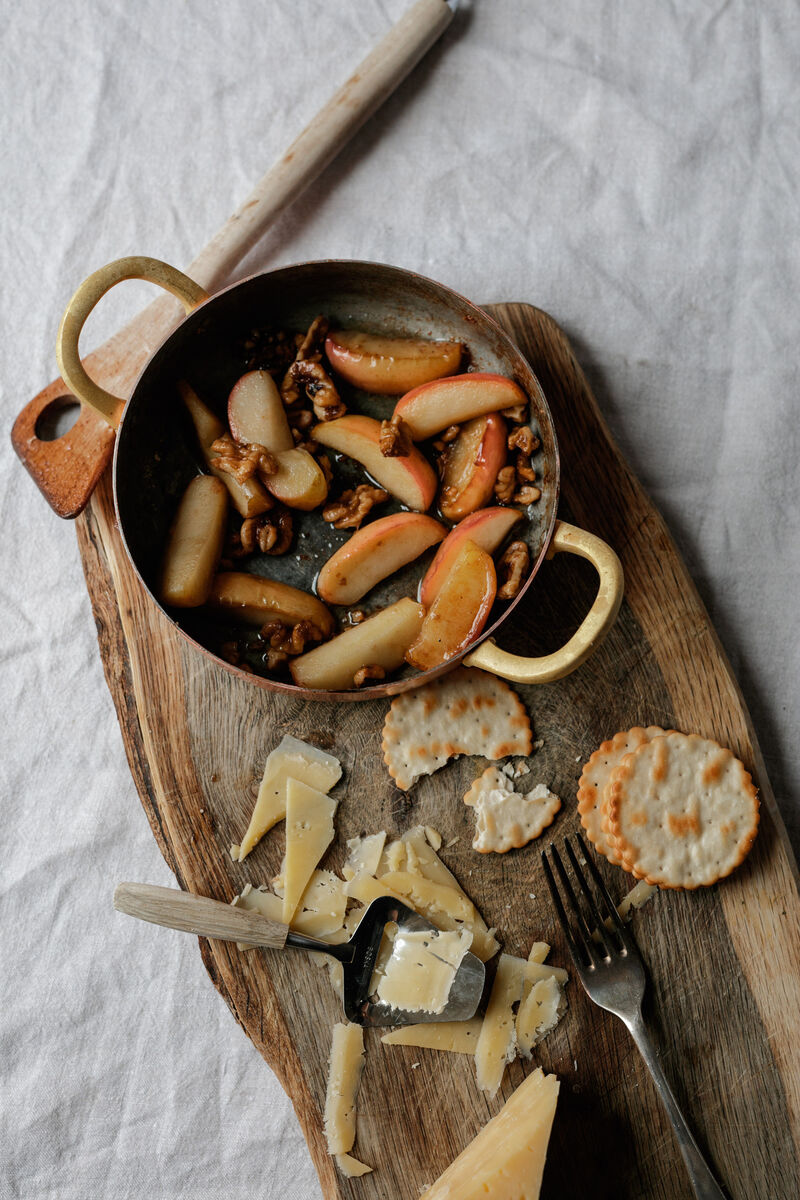
I like to make this as an easy snack on a moody evening where you might want to practice as much self care as possible. Lately my idea of self care always includes cheese, wine and a Netflix documentary. Find a nice firm apple for this, one that won’t soften too much or even disintegrate in the pan. My go-to for a good strong cheddar is usually Derg Cheddar which is absolutely sublime.
:
- 2 firm, crunchy apples, cut into quarters, core removed.
- 1 tablespoon of light rapeseed oil
- 30g of butter
- Handful of roughly chopped walnuts
- 100g strong cheddar
- Drizzle of honey to serve
- Good crackers to serve
In a small frying pan, heat the oil over a medium high heat and add the apples to the pan. Add the butter and fry in the pan, moving the apple pieces around regularly. You want the apple to caramelise on the outside, turning a nice golden brown colour. Be careful that you don’t let the apple go soft or soggy. Add the walnuts after three minutes and cook for a further one minute.
I like to serve the apples and walnuts in their small pan alongside the cheese on a board with some good quality crackers and maybe a drizzle of honey.
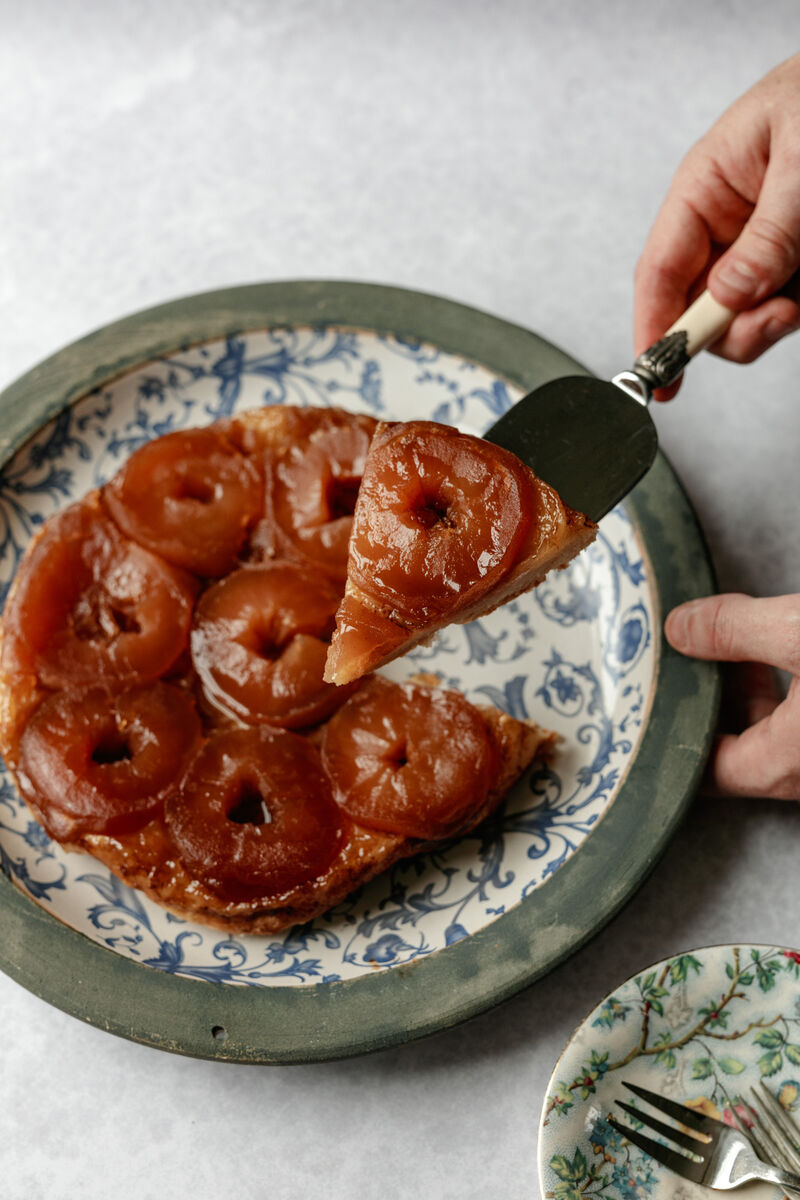
I have tried and tested many a taste satin recipe over the years and my conclusion is that keeping things as simple as possible is usually the best. The whole idea of a tarte tatin is about making a humble but delicious dessert out of the bare minimum of ingredients. Of course, use shop-bought puff pastry, which is usually of perfectly good quality. Making puff pastry is an arduous task, reserved for a particular type of boredom. I’m not a fan of mixing the pleasure of a delicious dessert with the challenge and technique of folding and chilling puff pastry all day long. It is best to make this in a shallow frying pan that can go in the oven, so no plastic handles etc.
- 150g sugar
- 100g butter
- 1kg of medium sized apples (similar varieties to Golden Delicious are best)
- 200g of shop-bought puff pastry
Preheat the oven to 180C.
Peel and halve the apples and then remove the cores.
Heat your shallow, oven proof pan over a medium high heat and add the sugar along with 2 tablespoons of water, allowing it to caramelise. You are looking for a nice golden brown colour, don’t let it darken too much.
Place the apple halves in the caramel, cut side down around the pan, packed as tightly as possible. Bake for 15 minutes in the hot oven.
Take the pan out and roll out enough puff pastry the comfortably cover your pan, tucking in the sides of the pastry circle down around the apples.
Bake for a further 15 minutes. The pastry should look golden and crisp.
Take out of the oven, pop a large plate on top and immediately flip it over so that the tart slips out of the pan and is now upside down on the plate. Use plenty of oven gloves, tea towels etc.
Leave to cool slightly before slicing it up and serving with cream or ice cream.

